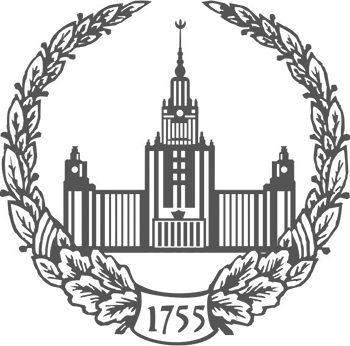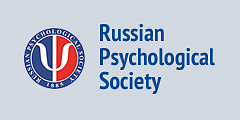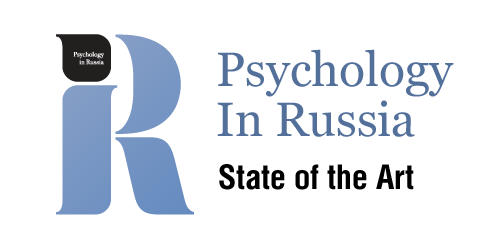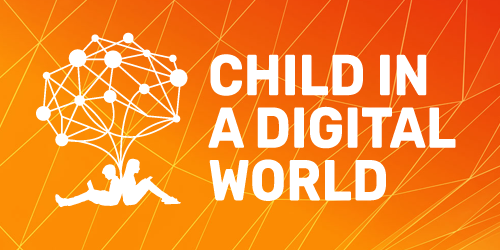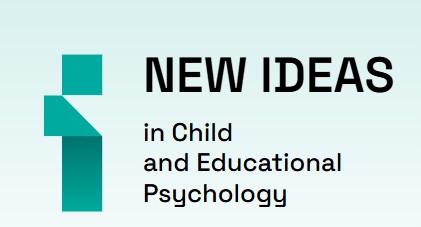Empirical studies
-
-
Background. According to modern empirical data, unconsciously processed information can have a significant impact on human behavior in all spheres of activity. Information about the unconscious information processing is fragmented and often contradictory. For the study of implicit learning different approaches are traditionally used, but none of them are effective for the clear results about the consciousness and abstractness degree of the knowledge obtained. We could more carefully inquire into the matter of unconscious knowledge and its influence on the cognitive problems solving with information about implicit learning of simple rules. This methodology makes it possible to apply more strong criteria for explicit knowledge and assumes purer experimental effects of implicit learning.
Objective. To consider and analyze the experience of use experimental techniques with simple regularities acquisition in the studies of implicit learning.
Methods. Review and analysis of studies using simple regularities in the field of implicit learning.
Results. In the article researches within the experimental paradigms "invariant learning" and "hidden covariation detection" are considered. The most significant experiments, their results and the criticism has led to an improvement of experimental procedures are presented. The problems of using different types of tasks in the training and test stages are described. The main possibilities and limitations of using these paradigms for revealing the effect of implicit learning are outlined. Further perspectives for the application of these techniques are considered. But one needs for a more rigorous approach to measuring the level of awareness.
Conclusion.Experimental paradigms with simple regularities acquisition may be promising for the study of implicit association learning mechanisms.
Keywords: implicit learning; invariant learning; hidden covariation detection DOI: 10.11621/vsp.2020.01.07
-
-
-
Relevance. The article discusses the relationship between the development of joint (shared) attention of a child with an adult, and the social and cognitive development of the child. Based on previous studies of typically developing children that demonstrate their participation and responsiveness to fundamental social characteristics, it is significant to identify manifestations of atypical joint attention when a child does not register which object (event) or which aspects of this object (event) are the focus of an interlocutor's attention. The question of which aspects of joint attention are related to the normative development of the child makes this relevant for comparing groups with different forms of atypical development. For the study, the main indicator of understanding the intentions of the other in the direction of view was used, as one of the aspects of joint attention.
Objective. To compare the development of social cognition and joint attention among typically developing children and children with various forms of atypical development in order to identify the correlation between the theory of mind and cognitive lesion.
Methods. In a sample of preschool children with typical development and of those with mental retardation, hearing impairment, speech impairment, or visual impairment (N = 90), the following methods were used to evaluate the children's understanding of the intentions, desires, and interests of others by their behavioral manifestations: “Test for Erroneous Opinion”, “Sally-Ann”; the “What does Charlie want?” task, and others. The task was also used to assess the child’s ability to use the direction of a character’s gaze in a picture to determine the person’s intentions.
Results. We identified the “primary psychological” characteristics of the atypical development of the child, which prioritize violations of social communication. Several variations of the violation of joint attention were singled out by determining a person’s intentions by the direction of their gaze. It was shown that determining intentions by the direction of gaze is associated with the normative age formation of the child. Symptoms of deficiency in this skill vary depending on the specifics of the child’s atypical development.
Conclusions. Secondary deviations in the development of social cognition are specific to a particular primary defect. The limited inflow of information in the event of a violation of the analyzer creates unusual conditions in the children’s accumulation of the experience of social interaction that is necessary to form a mental model.
Keywords: attention; joint attention; Social cognition; age development; preschool age; theory of mind; mental model; mental retardation; autistic disorders; children with hearing impairments (deaf and hard-of-hearing) DOI: 10.11621/vsp.2020.01.06
-
-
-
Relevance. In occupations with high demands for resistance to stress, the reliability of conscious self-regulation is considered an important factor ensuring personnel reliability. This interdisciplinary study takes place at the intersection of general psychology, psychology of self-regulation, labor psychology, professional psychology, and extreme psychology.
Objective. To study the reliability of self-regulation as a universal and special resource for achieving goals under stressful conditions in high-risk occupations.
Methodology. Representatives of high-risk occupations – sailors (N = 139), pilots (N = 33), rescuers (N = 123) – and low-risk professions (teachers, N = 154) took part in the study. Individual differences in self-regulation and its reliability under stress were assessed by means of the Self-Regulation Profile Questionnaire (V.I. Morosanova & N.G. Kondratyuk, 2011).
Results. Self-regulation and its reliability in stressful conditions were found to be significantly greater among the high-risk professions than the low-risk ones. There were no significant differences in self-regulation reliability between the different groups of high-risk professionals.Using one-way ANOVA and Cohen’s effect size measures, differences in self-regulation variables were found between experts and novices for different professional groups. Among sailors and pilots, significant differences were found between experts and novices only for one variable: reliability of self-regulation. Quite the opposite result was obtained for the teachers: Experts differ significantly from novices in all self-regulation parameters except for reliability of self-regulation.
Conclusion. The study substantiated the view that reliability of self-regulation is a universal and special regulatory resource for professional goal achievement. The research results allow us to conclude that in high-risk occupations, reliability of self-regulation may serve as a professional resource ensuring efficiency, faultless operation, and safety.Keywords: stress; high-risk occupations; self-regulation reliability; regulatory resources DOI: 10.11621/vsp.2020.01.05
-
-
-
Background. The digitalization of society is making changes in the lifestyle of the whole population today. However, while the older generation uses the Internet as a tool, the teenagers, youth, and young adults perceive it to be a full-fledged living environment. Today, Internet resources are the main way of involving young people in extremist groups, and radicalizing them. The role of the Internet as a means of socialization is actively discussed in scientific discourse, and questions about the prevention of the negative impact of the Internet environment are being raised, as well as about the technologies and mechanisms used for exerting extremist influence. However, it is important to understand that the features of the sense of identity of the recipient are essential for the formation of sensitivity to Internet exposure, including to extremism.
Objective. The aim of our study was to identify personal predictors of the involvement of teenagers, youth, and young adults with the Internet, as well as to analyze their personality traits and vulnerabilities for extremist influence via the Internet.
Design. Our research methods included a sociological questionnaire for analyzing the involvement of respondents in the Internet environment, and adaptations of the psycho-diagnostic methods HEXACO, “The Dark Triad,” and a modified projective technique “Houses.” Our study sample was comprised of 2051 people (528 teenagers 13-15 years old, 686 youth 16-20 years old, and 836 young adults 21-29 years old).
Results. The results of the study showed that 16.9% of respondents are characterized by maximum involvement and immersion in the digital environment. Compared with the contrasting group of respondents who are less actively immersed in the Internet environment, the “involved teenagers, youth, and young adults” are characterized by a stable complex of personal characteristics (narcissism, “Machiavellianism,” inability to forgive, lack of organization, negative mood patterns, etc.). Also, behavioral markers and zones of vulnerability are defined for respondents who are characterized by maximum involvement and immersion in the digital environment while experiencing extremist influence on them.
Conclusion: The identified personal characteristics of teenagers, youth, and young adults actively involved in the Internet environment allow us to define and specify measures to prevent the radicalization of this group.
Keywords: personality ; Internet; informational environment; involvement; youth extremism ; cyber-socialization; digitalization DOI: 10.11621/vsp.2019.04.160
-
-
-
Background. The relevanceof this study is determined by society’s growing interest in the process of socialization of persons with mental disorders, which determines the need to find new means and methods of support for them based on modern technology.
Objective. To determine the possibilities of using virtual and augmented reality in the educational environment for children with mental disorders.
Design. The authors carried out a pilot study, including a survey of teachers and an evaluation of the perception of children with mental disorders of images of augmented and virtual reality. The mental disorders referred to in the article are understood to be autism spectrum disorders, combined with mental retardation. In total, 10 teachers and 14 children of the study group were interviewed.
Results. Data from the survey of teachers showed that children with mental disorders have difficulty in processing visual information; they like the interactivity of forms, and they can be attached to certain things (books, places), which should be considered when developing scenarios for using devices with hyperreality. Data from the survey of the children showed that they like the most familiar objects, and that they usually don’t perceive complex images and unknown symbols; they tend to pay attention to the small details of objects. They usually select images which use primary colors and cool tones. Observations have shown that children with mental disorders often navigate the interface of unfamiliar devices faster than the owners of the devices. By changing the size of the image, they seem to help themselves find the answer to the question.
Conclusion. Our data confirmed the possibility of using hyperreality in the education of persons with mental disorders, and concretized ideas about the features of pattern recognition in virtual and augmented reality. Particular attention was paid to the characteristics of the form of not only the images, but also the technical devices, since the design is interpreted as an "adapter" of virtual and augmented reality images to the current state of the recipient.
Keywords: virtual reality; augmented reality; hyperreality; mental disorders; education; socialization DOI: 10.11621/vsp.2019.04.144
-
-
Lomonosov Psychology Journal, 2019, 4. p. 126-143Polyakov Sergey D., Belozerova Lilia A., Vershinina Valeria V., Danilov Sergey V., Krivtsova Natalia S.read more4969
-
Background. This article is devoted to the study of the phenomenon of “clip thinking.” The connection of this topic with modern sociocultural processes is indicated. The methodological foundations of the study are the cultural-historical approach and the "style paradigm" of the study of cognitive processes. The most significant conceptual ideas and experimental data in the study of “clip thinking” in recent years have been highlighted.
It is noted that so far, there has not been an unambiguous scientific understanding of the phenomenon of “clip thinking,” and there are not enough techniques for studying it.
Objective. The main objective was the study of the “clip-integrity” thinking of high school and university students.
Design. The article describes the author’s method of studying the “clip-integrity” of thinking, as well as the results of its testing on a sample of senior schoolchildren (89 people) and university students (76 people).
Results. The study revealed that the proportion of university students with systemic (holistic) thinking is significantly higher than in the sample of schoolchildren. In schoolchildren, expressed “clip” thinking occurs one and a half times more often than among university students. The authors consider the age-typical characteristics of the respondents and the characteristics of the socio-cultural development situation, characterized, inter alia, by a change in the main information medium, as the main factors determining the identified features of thinking.
Conclusion. The possibilities of the methodology they developed allowed the authors to clarify the tasks of studying the cognitive characteristics of high school students and university students as relates to the phenomenon of “clip thinking” and its relationship with “holistic thinking,” and to set new research objectives.
Keywords: “clip thinking”; system thinking; senior schoolchildren; students DOI: 10.11621/vsp.2019.04.126
-
-
-
Background. The socialization of personality in the modern world occurs on the Internet and social networks, transforming traditional methods of communication on the basis of ethical standards for constructing interpersonal Internet communication. The basic rules are: personal responsibility for actions performed on the network, including illegal actions; respect and equality of partners; confidentiality; copyright protection; and privacy. The relevance of the problem of ethical standards in Internet communication in adolescence is due to its importance for youth and their formation of moral consciousness as a developmental task.
Objective. This study is aimed at identifying attitudes toward ethical standards of Internet communication among youth users with different levels of moral consciousness. Our research goals were: 1) elaboration and testing of the author's technique “Ethical Dilemmas in Internet Communication” (EDI); 2) discovering attitudes towards ethical standards in Internet communication and strategies for resolving ethical dilemmas; and 3) study of the relationship between the level of the moral consciousness of respondents and their orientation toward following the basic ethical standards in Internet communication.
Design. The methods used were the author’s EDI technique, including ethical dilemmas, and the questionnaire "Justice-Care" (S.V. Molchanov). The sample consisted of 61 subjects.
Results. We found an ambiguous attitude by users of the Internet network toward the ethical standards of communication and a differentiated attitude toward following ethical standards. A high level of willingness to follow the norm was identified for copyright protection, but a low one for respecting the inviolability of personal life and taking personal responsibility for actions performed on the network. The strategies for solving ethical dilemmas in Internet communication were clear. The hypothesis about the connection of the level of moral competence and the attitude toward following basic ethical standards in Internet communication was verified.
Keywords: Internet; e-interaction; media communication; adolescence; moral competence; ethical standards DOI: 10.11621/vsp.2019.04.107
-
-
-
Background. The transition from the analog economy to the digital one has been accompanied by the digitalization of all spheres of life, in particular the sphere of education, and according to the decree of the government of the Russian Federation, it requires a revision of goals, educational content, and the development of new tools that provide for lifelong learning, as well as the construction of new competency models.
Objective. To carry out a comparative logical-categorical analysis of various models describing digital competencies based on a review of domestic and foreign studies, and determine the content and place of digital competencies in modern competency models.
Design. Critical analysis and synthesis of the literature on the problems of digital competence.
Results. The vector of economic development in the Russian Federation will shift to the development of the knowledge economy over the next 10 years. This transition creates a number of problems: 1) The students are much more savvy than their teachers in the use of digital technologies, as they were immersed in the digital environment from early childhood; and 2) There is no single approach to the definition of the term "digital competence." The first part of this paper presents an analysis of the existing definitions, content, and types of digital competency. The second is a comparison of different models of digital competencies. The third part is about the inconsistency of the results of empirical research on the benefits and harms of digital technology for the mental development of children.
Conclusions. 1. Ubiquitous digitalization creates the need to develop a new competency model for the knowledge economy. 2. The concept of "digital literacy" is included in the concept of "digital competence" on the principle of "part-whole." 3. Science provides more and more evidence of the positive impact of the digital environment on the development of the psyche and human behavior. 4. A systematic approach to the formation of digital competence is needed in the form of specialized educational programs based on generalized instructions (indicative principles of action), taking into account the age characteristics of students.
Keywords: competence; knowledge economy; digital economy; digitalization; digital literacy DOI: 10.11621/vsp.2019.04.80
-
-
-
Background. Digital texts have become widespread in today’s society, both in day-to-day and professional life, as well as in education. Still there is some risk and we cannot realize all the potential outcomes since psychology has not thoroughly explored their use.
Objective. We studied the differences between the effectiveness of reading parallel and consequent texts.
Design. Our sample was 45 adults of ages 18 to 59. We adapted “Similarities,” the “Analytic-Holistic” cognitive style scale, and “Complex analogies” for online use.
Results. We found individual preferences for either parallel or consequent text presentation. The results of the parallel text presentation were worse than those with the consequent, and positively correlated with holistic style and verbal intellect. Success in working with parallelly presented text depends on the individual’s cognitive features and abilities. Parallel reading is a comprehensive cognitive task and requires more cognitive skills and higher intellect than consequent reading.
Keywords: digitalization; hypertext; cognitive styles; digital text; parallel reading; nonlinear text DOI: 10.11621/vsp.2019.04.59
-
-
-
Background. Virtual reality technologies (VR) allow users to absorb a lot of visual information in a short time and have become an important feature in education. The advisability of using virtual reality as a tool to improve the learning processes in the modern digital environment is an open question. Despite some studies devoted to assessing the effectiveness of virtual reality applications to the education process, there are no clear conclusions on this issue.
Objective. The study of features of foreign language learning material using VR.
Design. 29 young participants (22 females, 7 males) with a high level of foreign language competence were selected. They received three types of stimuli: text, 2D video, and VR. The efficiency of their learning was tested with questions before and after each experiment. VR stimuli were presented by Samsung Gear VR.
Results. It was shown that “VR” and “Text” conditions were the most efficient material for foreign language learning as compared to the “2D-video” condition. The results also showed a strong negative correlation between the participants’ baseline level of knowledge and their knowledge gain under all experimental conditions.
Conclusion. VR offers an effective method for improving the process of learning, but traditional teaching methods still play an important role in education. Young people in the modern world have developed ways to use the VR as an educational tool.
Acknowledgments: The study was supported by the Russian Federal Property Fund grant No. 18-29-22049.
Keywords: virtual reality; digital education; foreign language; educational process; informational environment DOI: 10.11621/vsp.2019.04.44
-
-
Lomonosov Psychology Journal, 2019, 4. p. 21-43Almazova, O.V., Dolgikh, A.G., Molchanov, S.V. , Agarkov Dmitriy V., Denisenko Sergey O., Levshina Maria A., Lysaya Tatiana E., Mariin Sergey S., Samuylova Olga S.read more4671
-
Background. The relevance of this study is associated with the widespread use of social media by adolescents with a high risk of turning to aggression and violence.
Objective. The purpose of the study is to investigate the characteristics of adolescents' perceptions of peer profiles in social networks that vary in degrees of “security,” and their readiness to carry out various communicative actions depending on their psychological characteristics. We hypothesized that: 1) There is a connection between the psychological characteristics of adolescent users of a social network, and their ability to differentiate profiles of peers-users of social networks and communicative actions in social networks; and 2) The oculomotor activity of adolescent users of social networks is associated with the degree of attractiveness of a peer profile.
Design. We used the methods of “Peer attachment” (G. Armden, M.T. Greenberg, 1987 as adapted by G.V. Burmenskaya, 2015); Emotional intelligence (D.V. Lyusin, 2009); Recognition of emotions by sight (S. Baron-Cohen et al., 2001); cognitive methods for assessing social information (S.V. Molchanov et al., 2018); eye-tracking technique; and conversation. The study included 40 adolescents 14 to 17 years old.
Results.We distinguished three groups which differed in their attachment to peers, emotional intelligence, and cognitive methods of processing social information; they comprised three types – “idealizing,” “selective,” and “cautious.” We showed that the "selective type" is characterized by the highest degree of differentiation of "dangerous" and "safe" profiles of peers in social networks, and high selectivity in implementing various communicative actions. The greater attractiveness of the main information in a peer’s profile is reflected in more fixations, fixation time, and returns to the zone.
Acknowledgments.This work was financially supported by the Russian Federal Property Fund No. 18-013-01080 “Cognitive methods for processing social information from the Internet as a factor in the formation of adolescents' ideas about the moral regulation of relations in the modern information society”.
Keywords: social networks; adolescence; cognitive methods of social information processing DOI: 10.11621/vsp.2019.04.21
-
-
-
Background. The widespread use of personal computers in everyday life has led to the need for their use in the programs of children's institutions. However, so far little is known about the impact of the use of personal computers on the cognitive abilities of preschoolers.
Objective. The goal of the study to analyze key empirical data presented in the current scientific literature and to identify the relationship between the use of information technology and the cognitive abilities of preschool children.
Design. We used three tests that, in our opinion, allow us to assess the cognitive abilities of children in this age group: “TV,” “Your vocabulary,” and “Labirint”.
Results. Our results reveal the nature of the relationship between cognitive changes in children and their user activity on a personal digital device (computer) which is firmly established in the life of not only the family, but also a preschool educational organization. As a result of the deep theoretical analysis of the data presented in foreign and domestic literature and electronic sources, we were able to structure a study, the logic of which, along with the use of mathematical statistics, allows us to come to reliable conclusions.
Conclusion. From the perspective of the development of cognitive skills in children of preschool age, the results showed that the time spent at the computer has a positive effect which is cumulative, since it has an impact on test results one year later.
Keywords: information technologies ; children senior preschool age; computers; time; cognitive abilities DOI: 10.11621/vsp.2019.04.04
-
-
-
Relevance. In modern medicine, the question of an individual approach to the prevention and treatment of patients with dental diseases becomes relevant. Consideration of the personal characteristics of patients is necessary both for building a successful communication with a doctor and for predicting their adherence to medical recommendations.
Objectives. The study of the relationship of individual-personal characteristics of patients undergoing dental treatment, with a commitment to follow the recommendations of the doctor.
Methods and sampling. The study involved patients who underwent examination and therapeutic treatment in the dental clinic (63 women and 35 men). The study took place in two stages. At the first stage, the level of dental health was measured (by 5 indices) and a psychodiagnostic study was conducted to determine the individual and personal characteristics of patients (type of interpersonal relationships, character accentuation, extraversion / introversion); a questionnaire on attitudes towards dental health, developed by the staff at Pavlov’s University. Patients were given detailed instructions on proper oral hygiene. At the second stage (in a month), dental health indices were re-measured in patients.
Results. Adherence to the implementation of the recommendations of the dentist is associated with such personality characteristics as hyperthymic and demonstrative character traits, altruistic and authoritarian types of behavior in interpersonal relationships and extroversion. Insufficient level of care for dental health and low commitment to follow the recommendations of the dentist are associated with such personality features as anxious, fearful and dysthymic types of character accentuations and introversion.
Conclusion. The ability to predict patient behavior regarding compliance with the recommendations of the dentist based on the diagnosis of the psychological profile of patients opens up prospects for developing personalized prevention programs for each type of patient and introducing case management into the dental practice, in which an individual treatment plan is developed for each patient personal and social characteristics.
Keywords: dental health; personality traits; adherence to recommendations DOI: 10.11621/vsp.2019.03.141
-
-
-
Relevance. The results of the interaction of man and the environment are fixed and function in the mind with the help of signs and symbols. The need to study the patterns of mastering the subject content presented in a symbolic form, as well as socialization in general, makes it important to appeal to the fundamental question of the correlation of symbolic function with the structure and work of consciousness.
Objective. This article represents the processual model of consciousness allowing to consider the symbolic function as a moving force of human connection with the surrounding world. The essence of this connection is cognitive.
Methods. Analysis, synthesis and modeling. The study was carried out in the concept of a semiotic approach.
Results. Social origin of consciousness allows to model its structure. The following components of consciousness can be distinguished: the sensual fabric of an image; biodynamic fabric of the movement and action; meaning; sense.
The symbolic function should be studied within the concept of the processual model consciousness. Logic of processual model imposes studying of signs and symbols moving from the separate nominal condition through the systemic organization to the reflection.
Conclusions. Consciousness can be studied through the processual model, where the main characteristic of its elements is the interaction and mediation by signs and symbols. The primacy of a sign or symbol is determined by the degree of orientation of the subject in the situation. The transition of a sign into a symbol occurs as a result of the inclusion of a separate sign in an increasing number of sign-symbolic systems. This is possible in the process of personal temporal and spatial inclusion in the general vector of the “chronotope”.
Keywords: consciousness ; sign ; symbol ; symbolic function; image of the world; structure DOI: 10.11621/vsp.2019.03.124
-
-
-
Relevance. Cartoons carry the information about the world, human relations, norms of behavior and values to children, forming a kind of information "zone of the nearest development" of a child in the terminology of L.S. Vygotsky. In a situation of intercultural competition, it is important to understand what symbols, values, meanings, norms of behavior, perceived from domestic and foreign cartoons, can positively and/or negatively transform the process of socialization and development of the child's personality.
Objective. Research of specificity of perception of esthetic and moral characteristics of heroes of domestic and foreign animated films by children of preschool and primary school age.
Methods. Focus group interview, expert survey, semantic differential.
Sample. 24 kids 4-5 years; 30 pupils of primary school 8-9 years. Kindergarten teachers and teachers of primary school, 10 females 36-50 years.
Results. Foreign cartoons in the perception of children surpass domestic in quality of performance, modernity and attractiveness of the behavioral patterns of the characters, but lose in depth of the topic revelation. For preschoolers, the main carriers of values are the main characters of cartoons. Categories: "mind", "force", “beauty”, "kindness", "danger", "justice" are leadingin assessments of behavior of characters. Children record social distance through the categories of "Senior – Junior" and "Big – Small". Younger pupils do not see the moral background of the behavior of the small character of “Tom and Jerry” cartoon.
Conclusion. The results show that children are able to distinguish cartoon characters by cognitive categories, aesthetic category and also by moral. The content of the information environment, in which children immersed today, can inhibit the development of communication abilities of children and their emotional intelligence.
Keywords: perception; development ; child socialization; animated films; image of the hero; character assessment categories DOI: 10.11621/vsp.2019.03.105
-
-
-
Relevance. Knowledge of the spontaneous development of learning skills (LS) of University students is important and relevant, because the lack of LS adversely affects the success of independent learning, reducing the level of social and professional mobility of students and their competitiveness in the labor market.
Objective. Determining the dynamics and extent of spontaneous development of basic and additional LS students with an engineering profile in usual side developmental nature of learning at the University, as well as of their relationship with academic performance.
Methods. For the diagnosis of basic LS specially designed tasks to build knowledge on the material of technical disciplines were used. Additional LS were tested using the author's questionnaire with scaling.
Sample. 135 students of the 1st, 4th and 6th courses of technical universities of Moscow: 89 boys and 46 girls aged 18 to 33 years.
Results. During the full 6-year course of study, students of engineering profile showed an increase in the level of basic LS: non-independent knowledge building (+31.25%), independent knowledge building (+12%), mixed knowledge building (+81.96%). The growth of additional skills as conscious work with the cognitive sphere (+2.8%) and with emotional states (+13.33%) was established, but the ability to work with motives and volitional regulation decreased (-8.18%), as well as to work with knowledge as learning objectives (-16.12%), and to plan the order and time of activities (-10.21%).
Conclusion. It is necessary to take into account the reduced opportunities of students in decoding and generalization in the process of obtaining knowledge from messages with their ambiguity and a large amount of specific content. These types of basic LS need to be purposefully developed. The negative dynamics in the development of a number of additional LS also indicates the need for their special development at the University.
Keywords: general study skills; teaching the ability to learn; spontaneously developing subject training; consciously organized developing subject training DOI: 10.11621/vsp.2019.03.86
-
-
Lomonosov Psychology Journal, 2019, 3. p. 66-85Enikolopov, S.N. , Kovalev Alexey K. , Kuznetsova Juliya M. , Chudova Natalia V., Starostina Elena V.read more6173
-
Relevance. The designing of tools to identify a psychological distress in network is one of the most significant challenges of the era of information technology. There are evidences of certain peculiarities of the speech and textual activity of frustrated person. However, for texts in Russian, any tool for monitoring of the intensity of frustration in online content does not currently exist.
Objective. The purpose of our work is the listing of text features to carry out automatic analysis of the network content for detecting texts of frustrated users.
Methods. The material of the study is a set of posts and comments of 2-10 sentences collected in social networks LiveJournal, Pikabu and Facebook were written by 100 Russian-speaking users aged 27-64 years. The texts were divided as written by unexcited persons (500 texts) and by frustrated persons (500 texts). For automatic text analysis, the "RSA Machine" created in Federal Research Center "Computer Science and Control" of Russian Academy of Sciences was used, which allows to determine 197 text features, to compare texts, and to identify the most important dividing features. Mathematically, the texts were classified using the machine learning.
Results. The Random Forest method with a preliminary binarization procedure revealed the most significant features of text written by frustrated person: the sentiment; the frequency of punctuation, negative word forms and first-person pronouns; the number of semantic roles causative, liquidative and destructive; number of particles, invectives and words from the vocabulary of resistance.
Conclusions. Using the identified features the network texts written by frustrated person can be confidently determined; it is applicable for monitoring in order to ensure information and psychological security.
Keywords: frustration; social networks; text features; text mining; machine learning DOI: 10.11621/vsp.2019.03.66
-
-
-
Relevance. There are set of terms and theories, that describe human`s experience of interaction with the outside world. This leads to difficulties in comparing and analyzing the results of empirical studies of human representations of the world. This phenomenon is clearly manifested in the study of human concepts of the personal computer, actively developed by psychologists and specialists in human-computer interfaces design.
Objective. In this work we pretend to explain the requirements for empirical study of personal computers mental models (MM) structure in the framework of cultural-activity paradigm, based on the analysis of the history of MM research in various areas of cognitive psychology and cultural activity approach.
Results. We discussed the main approaches to the study of mental models in psychology, characteristics of MM and specificity of methods of their study. The concept of MM is compared with similar constructs developed in various areas of psychology: "cognitive map", "scheme", "mental representation", "meaning", "image of the world". We also analyzed the possibility of operationalization of this construct. The MM concept are compared with the A.N. Leontiev`s concept of the «image of the world» and features of the MM researches in cultural activity paradigm was showed. The concept of MM is discussed in the context of different approaches to the study of meanings in linguistics and psychology: the approach of fixed meanings and research of embodied cognition. Finally, we describe the main characteristics of MM, which should be taken into account to plan an empirical study of human representations of personal computers.
Conclusion. In the construction of empirical research of personal computer`s MM we should require special attention to such characteristics of MM, as their consistency, cultural dependency and integrity; methods of such study should take into account the own activity of the subject.
Keywords: mental image of the world; A.N. Leontiev; meaning; computer users; mental model; cognitive mapping DOI: 10.11621/vsp.2019.03.47
-
-
-
Relevance. Individual’s entire life is accompanied by jealousy, whether or not the individual recognizes the presence of jealousy.The study of jealousy is continued near the half of century while relations between love and jealousy have stayed unclear. The link between jealousy and partnership satisfaction, especially with such important element as a sexual satisfaction, remain unclear also.
Objective. The clarification of these links, taking into account the dramatic increase of virtual communications between real or potential partners. Our aim was to verify too the construct validity of the Russian and Latvian versions of the new jealousy scale by Dijkstra, Barelds, and Groothof.
Methods. For this reason besides the scale of Dijkstra and his colleagues were used the 45-item scale of Love by Sternberg, the 16-item Marital Satisfaction Questionnaire by Herman, the 25-item Revised Self-Report Jealousy Scale, he Frequency Index of Sexual Satisfaction by Breslav. The sample of the study comprised 75 participants aged 22 to 57 who had stayed in a more or less long-time romantic relationships.
Results. The hypothesis about the correlation between love, satisfaction with partnership relations and sexual satisfaction was confirmed. A significant positive correlation of love and jealousy was also revealed on the 42-item scale used to measure the proneness to reactive jealousy in real and virtual environment.
Conclusion. The correlation between proneness to reactive jealousy, love, and satisfaction with partnership relations found in the study suggests a certain potential of the protective function of this type of jealousy and charges researchers with new tasks in understanding the nature of jealousy and its consequences.
Keywords: jealousy; love; infidelity; sexual satisfaction; partnership’s satisfaction DOI: 10.11621/vsp.2019.03.27
-
-
-
Relevance. In modern psychology, coping is understood as a multicomponent phenomenon. Research conducted using questionnaires allows you to study only one of the components. The proposed simulation puzzle game models the situation of solving group problems and opens up the possibility of observing and research poorly studied aspects, in particular, the ratio of individual and group coping, the dynamics of overcoming a difficult situation.
Objective. The goal is to test a simulation puzzle game as a tool for studying coping with a difficult situation, analyzing the possibilities of a technique for studying human activities to solve difficult life tasks.
Method. A group of 3 people are invited to collect on the proposed silhouette 3 identical figures of 12 elements of pentamino. In the course of the game, a protocol is kept and the video is recorded. At the end of the game is debriefing. The study involved 72 people.
Results. The analysis of signs of a difficult life task in comparison with conditions of game and results of supervision is carried out. A categorical apparatus for content analysis of replicas of participants elaborated.Selected indicators of the coping process: number of proposed solutions, content of replicas, ways of coping, role (individual indicators); time of collecting the puzzle, the emotional background, the implementation of successful initiatives, satisfaction of participants with the game (group indicators). The possibilities of debriefing to analyze the experience of problem solving are described.
Conclusions. Asimulation puzzle game allows you to study the processes of individual and group copying. Using the game model, conditions are created in which the experience of interaction with difficult life situations is reproduced.
Keywords: difficult life situation ; task; brain-twisters ; goals; coping; simulation game; pentamino DOI: 10.11621/vsp.2019.03.03
-


